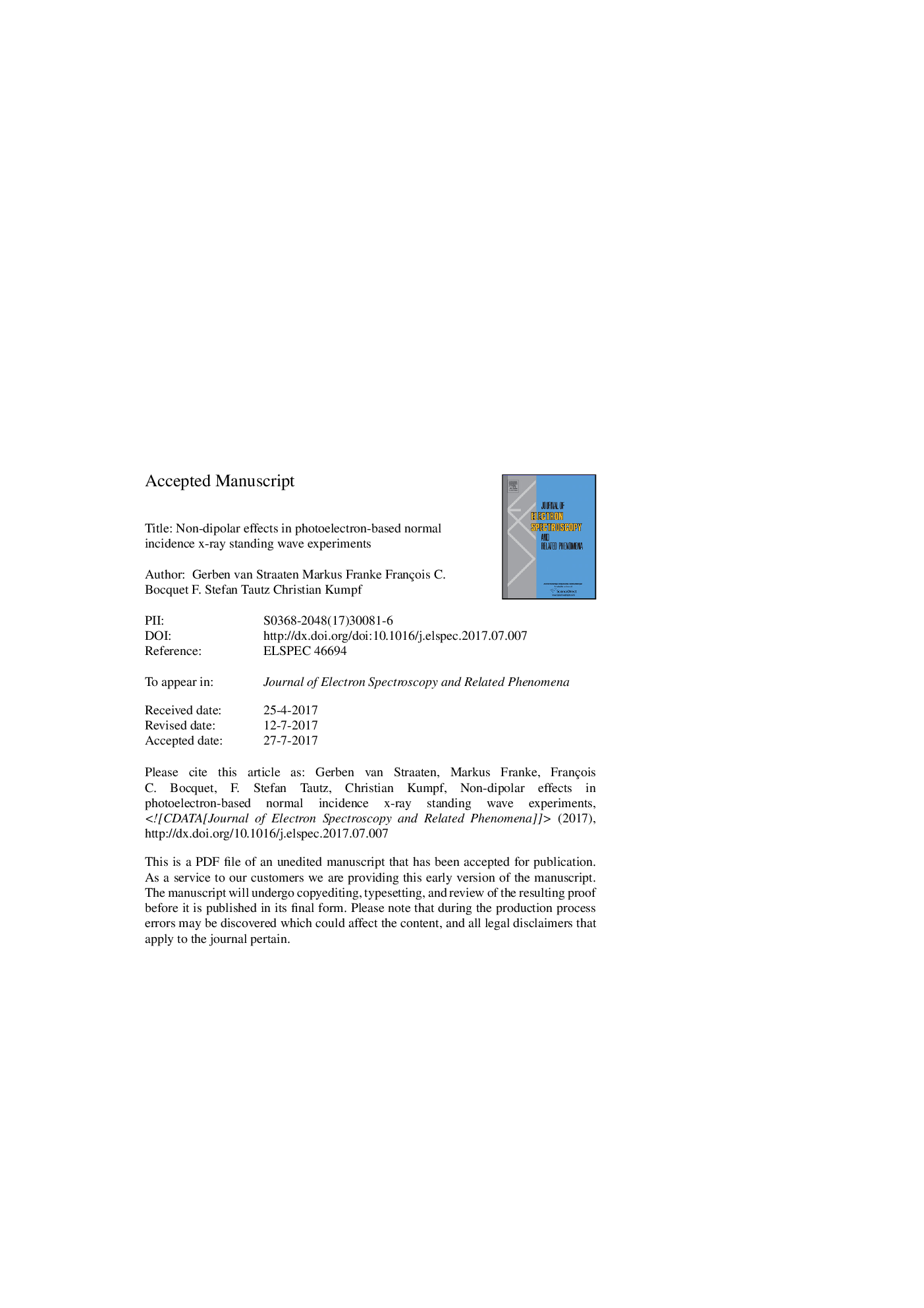| Article ID | Journal | Published Year | Pages | File Type |
|---|---|---|---|---|
| 7839455 | Journal of Electron Spectroscopy and Related Phenomena | 2018 | 16 Pages |
Abstract
The normal incidence X-ray standing waves technique is one of the most well-established methods for investigating the geometric structure at interfaces and surfaces. It is able to measure vertical positions and distances of individual atomic species with very high precision (typically <0.02Â Ã
). These data not only yield valuable structural information, but also represent an excellent benchmark for density functional theory and ab initio calculations. Non-dipolar effects are well known to strongly affect the result, in particular when light elements are involved. A correction mechanism for these effects is established, but in its commonly-used form it is based on one essential restriction, namely the assumption of perfect normal incidence of the X-rays with respect to the relevant lattice planes of the crystal. Here, we show that small deviations from normal incidence, as they are unavoidable in typical experimental setups, lead to significant systematic errors in the NIXSW results. The magnitude of this effect depends on the specific conditions in a non-linear way and may reach up to 5%, corresponding to several tenths of an Ã
ngström in the adsorption height. We present a straightforward way of accounting for this effect, and demonstrate that recording the photoelectron yield in an angular-resolved mode is indispensable, since the correction parameters strongly depend on the electron take-off angle.
Related Topics
Physical Sciences and Engineering
Chemistry
Physical and Theoretical Chemistry
Authors
Gerben van Straaten, Markus Franke, François C. Bocquet, F. Stefan Tautz, Christian Kumpf,
